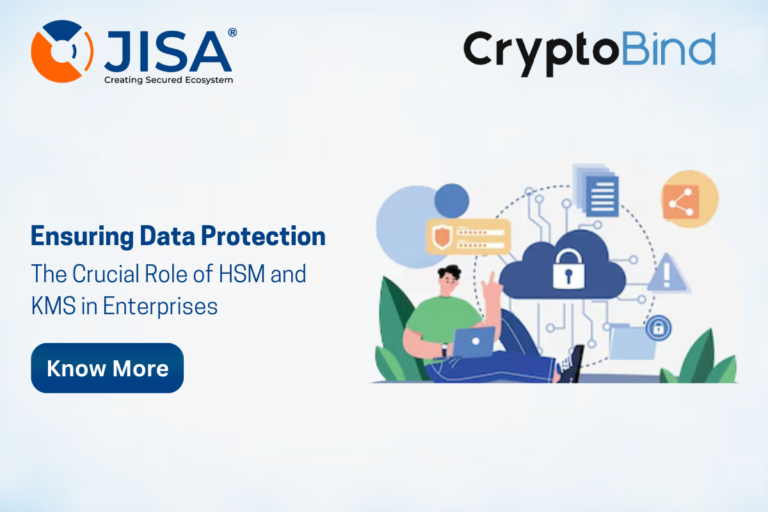The Hidden Costs of Not Using HSMs in Regulated Sectors
In regulated sectors such as banking, healthcare, and government services, the importance of safeguarding sensitive data is well understood—but the implementation of security measures like Hardware Security Modules (HSMs) is often seen as optional due to perceived cost, complexity, or integration challenges. This perspective is not just short-sighted—it’s potentially disastrous.
While the upfront cost of HSMs can be significant, the hidden costs of not using them—ranging from regulatory penalties to data breaches and reputational damage—can be exponentially higher. In this blog, we delve deep into these hidden costs and explore why HSMs should be a cornerstone of any security architecture in regulated industries.
What is an HSM and Why Does It Matter?
A Hardware Security Module (HSM) is a tamper-resistant physical device designed to securely generate, store, and manage cryptographic keys. It performs critical operations such as encryption, decryption, authentication, and digital signing—all within a secure, hardened environment.
HSMs are widely used in regulated sectors due to their compliance with globally recognized standards like FIPS 140-2 Level 3 or 4 and Common Criteria EAL4+. They provide both physical and logical protections against unauthorized access and are considered the gold standard for key management.
The Illusion of “Secure Enough” – Why Software Key Storage Falls Short
Many organizations rely on software-based key storage, embedded in applications or OS-level keystores. While easier to implement, this approach opens the door to a wide array of threats:
- Insider threats (e.g., sysadmins with elevated access)
- Memory scraping or cold boot attacks
- Malware targeting OS-level keystores
- Unauthorized key extraction from compromised servers
In regulated sectors, these vulnerabilities are unacceptable—not just from a security standpoint, but from a compliance and auditability perspective as well.
The Real Costs of Not Using HSMs
Let’s break down the true cost dimensions that come into play when organizations skip HSMs:
1. Regulatory Fines and Compliance Failures
Regulatory frameworks like:
- PCI-DSS
- HIPAA
- FIPS/NIST
- GDPR
- India’s DPDP Act
- RBI Guidelines
- SOX and GLBA (in the US)
often require strong cryptographic controls, secure key management, and auditability. Failing to comply can result in hefty fines, license revocations, and in some cases, criminal liability.
Example: In 2020, a major European bank was fined €4 million for not using adequate key management practices that resulted in unauthorized access to encrypted customer data.
If HSMs had been in place, the keys would have been protected in a way that even a compromised system could not have accessed them without policy-based approval mechanisms.
2. Data Breaches and Incident Response Costs
According to IBM’s 2023 Cost of a Data Breach Report:
- The average cost of a data breach globally is $4.45 million.
- Breaches involving cryptographic key theft cost up to 60% more.
- Breaches in regulated sectors like finance or healthcare are among the most expensive.
When keys are not protected in hardware, attackers who gain access to the server can extract keys and decrypt data at rest or in transit—turning what could have been an encrypted, unreadable dataset into a complete data loss event.
Moreover, regulatory bodies expect post-breach forensics to include evidence of secure key management. Without HSMs, organizations often fail to provide such documentation.
3. Brand and Trust Erosion
Reputation is fragile, especially in industries where trust is paramount—like finance, healthcare, or digital identity platforms.
In a market increasingly driven by digital services, the customer perception of security plays a critical role in user retention and brand value. One breach due to unprotected keys can result in:
- Loss of customers
- Drop in stock price
- Negative media exposure
- Lower Net Promoter Scores (NPS)
Case in point: A global fintech firm saw a 30% decrease in customer sign-ups following a breach in which improperly stored API keys were stolen. The damage to customer trust far outweighed the costs of deploying HSMs.
4. Operational Inefficiencies and Downtime
Organizations relying on software-based or fragmented key management often struggle with:
- Key sprawl
- Manual rotation policies
- Inconsistent access controls
- Complex audit trails
These inefficiencies result in high administrative overhead, errors during incident response, and downtime during key rotations or certificate expirations.
HSMs provide centralized, automated key lifecycle management with strong access policies and zero-touch rotation options—streamlining operations significantly.
5. Vendor Lock-in and Migration Challenges
Without HSMs, cryptographic keys are often tied to specific cloud platforms or applications, making migrations and cloud repatriation complex and risky.
HSMs (especially those that support BYOK, HYOK, and multi-cloud integrations) allow organizations to retain ownership of their keys, independent of where their workloads reside. This mitigates cloud vendor lock-in and ensures cryptographic agility.
6. Legal Exposure and Contractual Liabilities
If data governed by contractual obligations (e.g., B2B data sharing, payment processing) is breached due to poor key management, organizations can face civil lawsuits and damages.
In many industries, using HSMs is a contractual expectation for high-value partnerships and vendor relationships. Lack of it can:
- Disqualify a company from RFPs
- Lead to loss of high-revenue clients
- Invite third-party litigation in case of breach
Addressing Common Myths About HSMs
Let’s address some common objections to HSM adoption:
“HSMs are too expensive.”
Modern HSMs come in various deployment models:
- On-prem appliances
- Cloud HSMs (e.g., AWS CloudHSM, Azure Key Vault with HSM)
- As-a-Service models
This makes them affordable at scale, even for mid-sized organizations. Moreover, cost of prevention is always lower than cost of remediation.
“They’re hard to integrate.”
With SDKs, APIs (PKCS#11, KMIP, JCE), and cloud-native options, HSM integration is easier than ever. Many platforms offer plug-and-play compatibility with:
- Certificate authorities
- TLS/SSL servers
- Payment gateways
- Code signing systems
- Database encryption solutions
“Software encryption is good enough.”
Software encryption might provide confidentiality, but not control and governance. With HSMs, you gain features like:
- Role-based access control (RBAC)
- Quorum approvals
- Audit logs
- Key destruction guarantees
- Secure backup & restore
Building a Future-Proof Security Strategy
As cyber threats evolve and data protection regulations tighten, organizations must move beyond checkbox security. HSMs represent defense-in-depth, not just against external attackers, but also insider threats, misconfigurations, and legal non-compliance.
Here’s how to integrate HSMs into your security posture:
- Conduct a Key Management Risk Assessment
Identify where cryptographic keys are generated, stored, and used. Evaluate the risk of compromise at each point.
- Align with Regulatory and Industry Standards
Map out compliance requirements and align HSM deployments with industry mandates.
- Select the Right HSM Model
Choose from on-prem, cloud-based, or hybrid HSM models based on your business size, latency needs, and budget.
- Centralize Key Management
Avoid fragmented key systems by integrating HSMs with existing infrastructure via standardized protocols.
- Educate Stakeholders
Make security and compliance a board-level conversation. Highlight the cost-benefit tradeoff to win leadership buy-in.
Conclusion
While HSMs might seem like a discretionary investment, especially in early-stage or cost-sensitive environments, the hidden costs of not using them—in terms of fines, breaches, reputation, and operational chaos—far outweigh the initial outlay.
In regulated sectors, HSMs are not a luxury. They are a baseline security control—a non-negotiable component of any architecture that claims to be secure, resilient, and compliant.
As the saying goes: “If you think compliance is expensive, try non-compliance.” The same holds true for HSMs. Investing in them today is an investment in business continuity, customer trust, and regulatory survival tomorrow.








